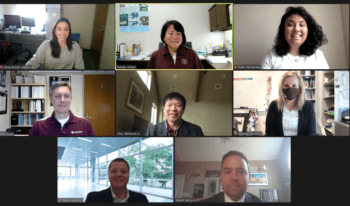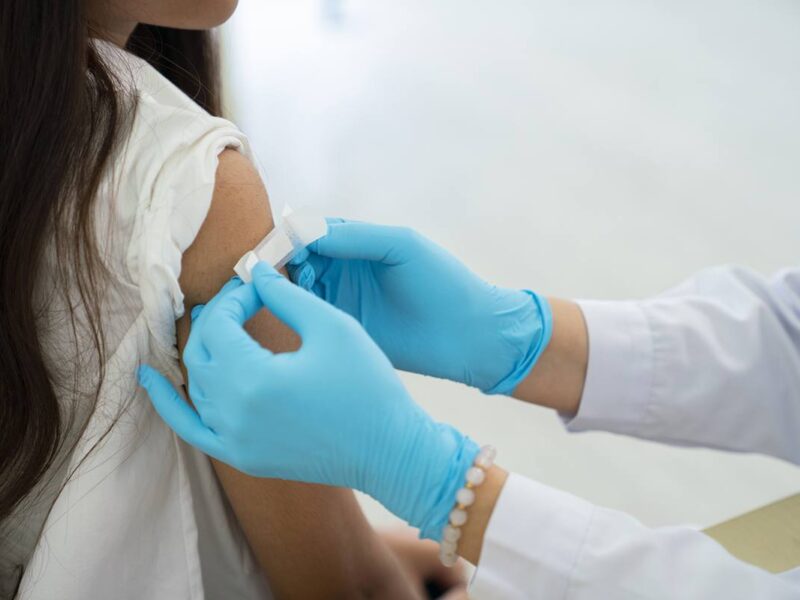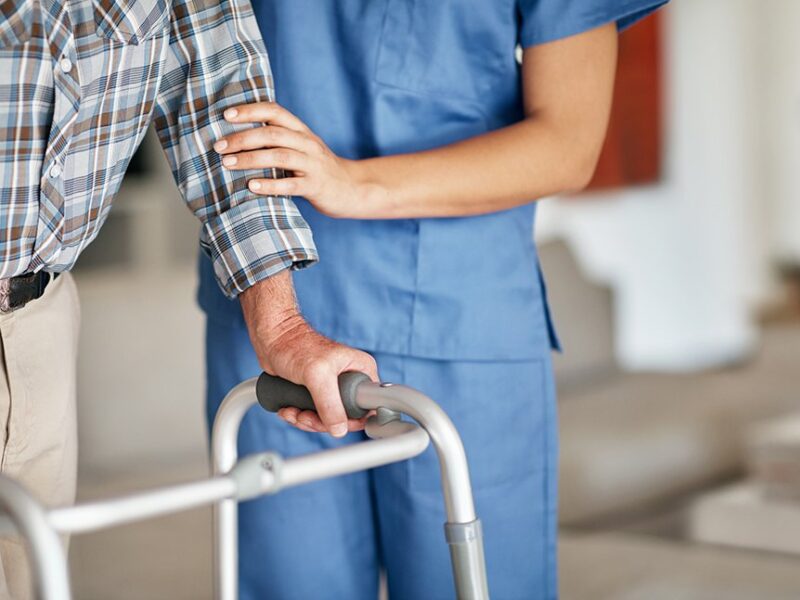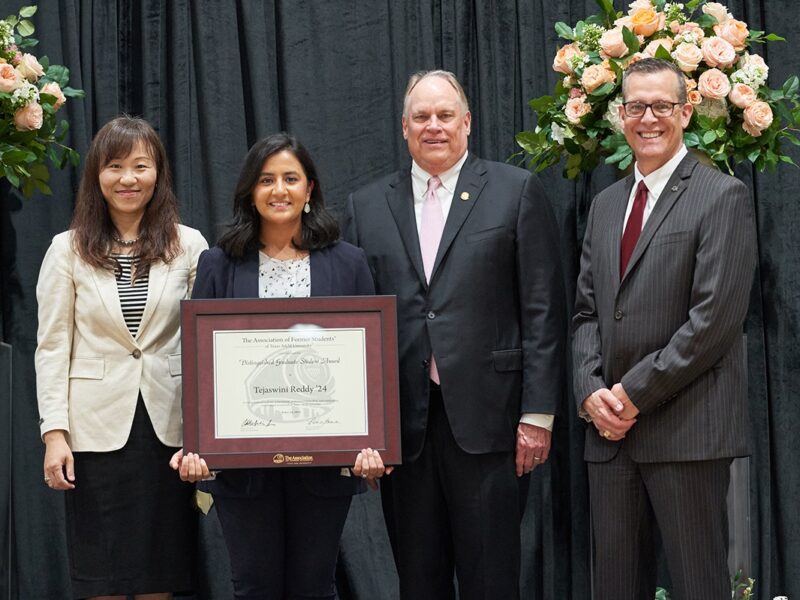‘Demystifying COVID-19 & Vaccinations’

The Texas A&M Superfund Research Center and the School of Public Health recently partnered to present a series of community webinars on COVID-19 and vaccinations.
About 200 Houston-area high school students and community members attended each of the two “Health, Equity & Action: Demystifying COVID-19 & Vaccinations” webinars offered earlier this month. Experts from multiple fields explained the science behind COVID-19 and vaccines.
Speakers included research assistant professor Garett Sansom and instructional assistant professor Angela Clendenin from the School of Public Health; College of Veterinary Medicine & Biomedical Sciences (CVMBS) professor Weihsueh Chiu; professor of biology and Global Health Research Complex chief virologist Benjamin Neuman; and professor Ivan Rusyn.
For both webinars, graduate students Ruby Hernandez from School of Public Health and Alina Roman-Hubers, from the toxicology graduate program served as live English-Spanish translators.
The first presentation focused on demystifying COVID-19 and covered a general overview of what we now know about the disease and the inequities the pandemic has revealed in our communities.
“We have learned so much in one year thanks to many thousands of scientists and doctors around the world,” Chiu said. “Unfortunately, COVID-19 has also revealed and made worse many inequities in our country. People of color are more likely to get sick, and more likely to die from COVID-19.”
He stressed the important role vaccines will play in addressing these inequities and in the overall effort to overcome the virus.
Misconceptions about COVID-19 vaccines are causing many people to avoid vaccination. To address misinformation and explain how the vaccines work, the second presentation focused on the SARS-CoV-2 variants and vaccines. Several of the webinar attendees expressed excitement about learning more about the virus and vaccines directly from Neuman, who has been involved in coronavirus research since 1996.
“Regardless of the type of vaccine that you may be able to get, please be assured that they all have been rigorously tested and are highly effective,” Rusyn said. “We should have as many people vaccinated as possible, quickly, to prevent severe disease and death and to stop the spread of the virus.”
The webinars were supported by the Texas Environmental Justice Advocacy Services (t.e.j.a.s) and Furr High School, located in a largely Hispanic community in Houston. Plans are being developed to hold similar webinars in the near future with other community partners in Houston. Future events open to the public will be announced on the Superfund Center’s Facebook and Twitter pages.
“Usually, when we share new knowledge, that new information actually leads to more questions, and I hope that is where we find ourselves today,” Clendenin said during the event. “Become consumers of information, but be informed about where you get it. If I have done my job today, hopefully each of you will feel empowered to do the right thing, to be Texans helping Texans, to engage in behaviors that continue to protect our families, our friends, and our neighbors, so that each person lost to this pandemic will not have passed in vain.”
The webianrs were held as part of the Superfund Center’s Community Engagement Core, which focuses on youth engagement to foster the development of the next generation of environmental health scientists and advocates. Newman serves as the principle investigator and Sansom serves as a co-investigator.
A full recording of the March 10 webinar is available on the CVMBS YouTube channel.
This article by Megan Myers originally appeared on the College of Veterinary Medicine & Biomedical Sciences website.





